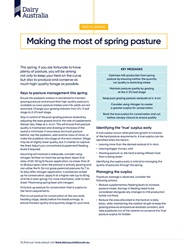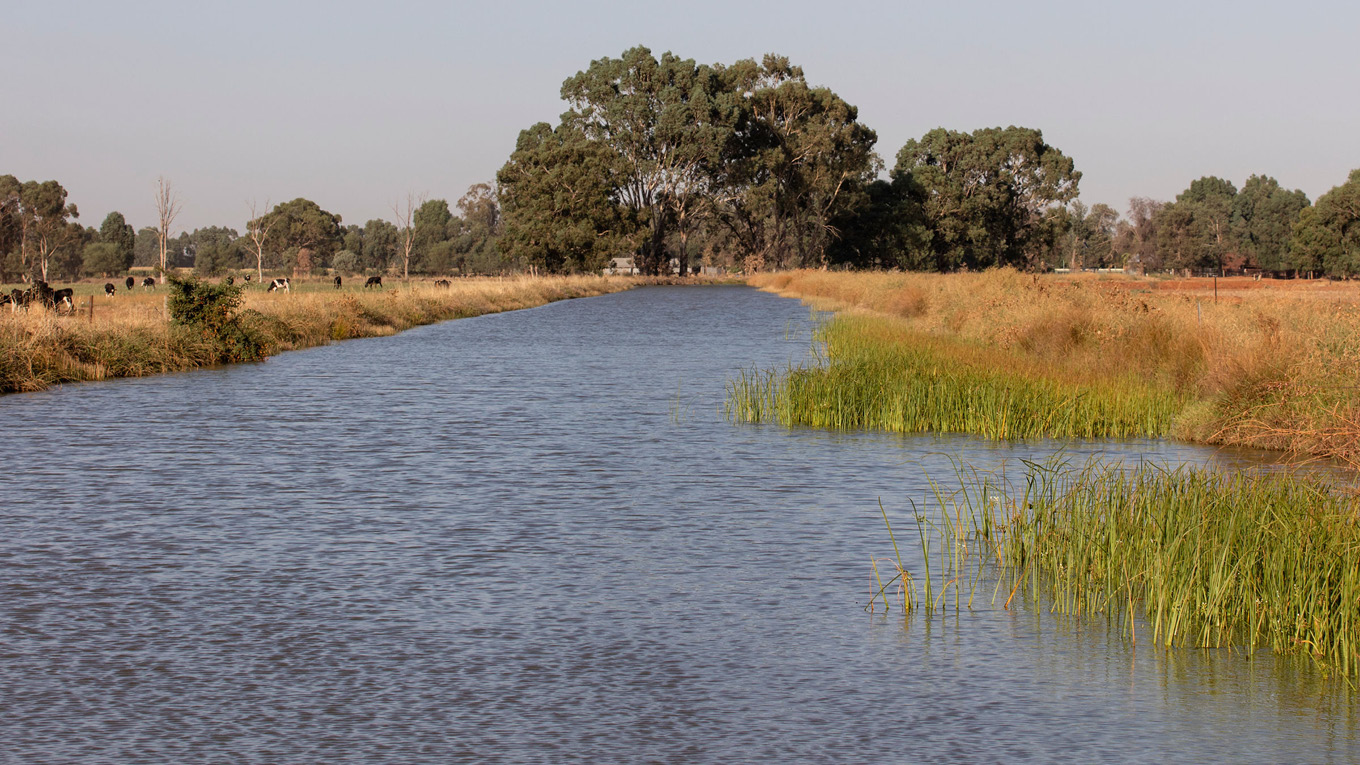Managing Pastures in Wet Weather, Spring & Summer
Managing Wet Soils
Grazing waterlogged paddocks can result in serious pugging damage to pastures and soils. This can commonly occur during winter and early spring in many parts of southern Australia.
This damage can reduce pasture utilisation by up to 50% and reduce pasture yields by between 20% and 80% over the following four to eight months. Further, these conditions can increase the likelihood of animal health problems such as lameness, mastitis and magnesium deficiencies.
Some low-cost practical management strategies that will reduce the impact of pugging are detailed in the Managing wet soils fact sheet. Key messages from this fact sheet include:
- Pugging damage to pastures should be minimised wherever possible
- ‘On-off’ grazing of pastures is an effective and easy strategy to implement
- Cows can be confined on a ‘sacrifice paddock’ for part of the day to limit the amount of damage done and protect the pasture base of the farm
- Cows should be moved off pasture after a maximum of four hours grazing
- Supplements can be used as a tool to ensure cows are fully fed and to enable a slow grazing rotation to be maintained
- Avoid the temptation to speed up the grazing rotation
- Be aware of the increased risks of mastitis, lameness and magnesium deficiencies in the herd
Setting paddock rotations to maximise pasture quality
As pasture growth and leaf appearance rates increase in early spring, the focus should be on managing for quality.
Paddock rotation length generally needs to be shortened to help maintain grazing pressure and ensure high-quality pasture is available.
Whether soils are drier than average or still moist, pastures will be in a much better position to give greater yield responses if they have not been overgrazed.
Locking up paddocks – how many and which ones?
As spring progresses, it is important to only drop paddocks out of the rotation for conservation that are surplus to the herd’s requirements.
Things to consider when deciding which paddocks to lock up include:
- How easy will it be to get machinery into and onto this paddock if it rains heavily?
- Pasture composition – is it a ryegrass or ryegrass/clover mix with minimal weeds?
- Is the paddock to be used for a follow-up summer crop and when does it need to be sown in relation to soil temperature, soil moisture and trafficability?
- Is the paddock close to sources of water for irrigation?
- Are potassium levels in soil excessive? Silage from these paddocks may be undesirable for feeding to transition cows.
In this video, WestVic Dairy's Peter Gaffy and consultant Tom Farran discuss how to manage the spring surplus.
For more information, download the Making the most of spring pasture fact sheet. Key messages from the fact sheet include:
- Optimise milk production from spring pasture by ensuring neither the quantity nor quality is restricting intake
- Maintain pasture quality by grazing at the 2–2.5 leaf stage
- Keep post grazing pasture residuals at four to six centimetres high
- Consider using nitrogen to create a greater surplus for conservation
- Bank the true surplus for conservation and cut before canopy closure to ensure quality
Making the most of spring pasture
Summer management of ryegrass pastures
The management of ryegrass through summer when feed availability is low is very important to get right. Getting the management right will ensure the persistence of the pasture sward is not compromised the following autumn by overgrazing in the dry months when there is little feed available.
In this video, consultant Frank Mickan provides advice on how to get this important management aspect correct.



